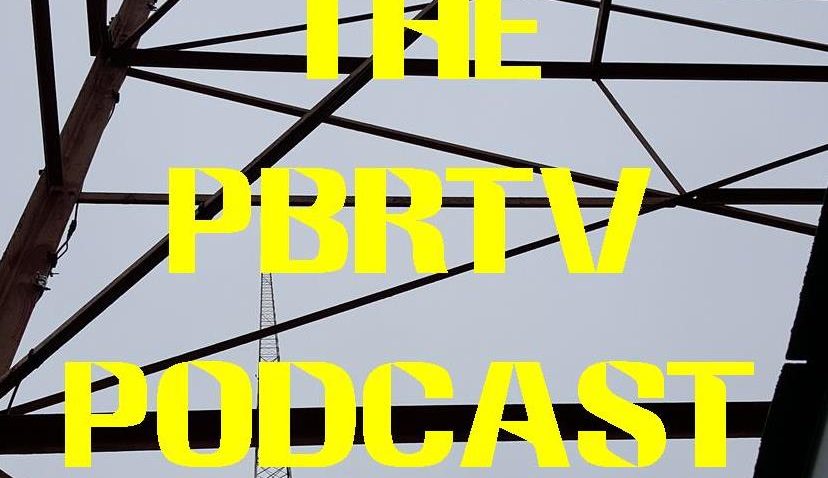Take ‘TAE and see
December 10, 2007Its affiliation with Hearst gave it access to the promotional power of the company’s afternoon newspaper, the Sun-Telegraph, yet during the so-called “golden age of radio” in the 1930s and ’40s, WCAE never seemed to lack the pizazz of its competitors. Saddled with a weak network (Mutual) and signal, WCAE’s problems only intensified after 1957, when Hearst turned its attention in Pittsburgh to its brand-new TV station, WTAE-TV (4).
 The station (which used the call letters “WRYT” for a few years) drifted through the 1960s with a mix of “beautiful music” and middle-of-the-road pop before the arrival of Bernie Armstrong Jr. as program director in 1970 and new general manager Ted Atkins in 1973. The station’s 1969 purchase of rights to the Pittsburgh Steelers broadcasts turned out to be a genius move when the NFL’s perennial doormats turned into four-time Super Bowl champions.
The station (which used the call letters “WRYT” for a few years) drifted through the 1960s with a mix of “beautiful music” and middle-of-the-road pop before the arrival of Bernie Armstrong Jr. as program director in 1970 and new general manager Ted Atkins in 1973. The station’s 1969 purchase of rights to the Pittsburgh Steelers broadcasts turned out to be a genius move when the NFL’s perennial doormats turned into four-time Super Bowl champions.
A new mix of current hits and oldies, combined with an aggressive news department, solid on-air personalities and an upbeat presentation, made WTAE radio a force to be reckoned with in the 1970s. After stealing morning host Jack Bogut from KDKA in 1983, WTAE was number two in mornings and number three over all.
. . .
But the audience for music was moving to FM, and talk programming gradually filled the WTAE lineup until the station reinvented itself in 1987 as “News/Talk 1250.” Hoerth joined the station from KQV the following year; Musick, a former Pittsburgh Press columnist, and Cullen, a WTAE-TV feature reporter, completed the lineup. Mornings were held down first by David Lawrence, then by the “Newsline” team of Alexandria Chaklos and Joe DeStio.
O’Brien and Garry, who had moved from WTAE to its sister station WHTX-FM (96.1) in 1983, were reunited as the station’s morning team in November 1994.
Yet just as the move from music to talk on the AM band overtook WTAE, the station was now about to be swept up by the deregulation of the broadcast industry that lifted traditional ownership caps and allowed companies to purchase many, many more outlets than the traditional “10 AM, 10 FM and 10 TV.”
. . .
 The die was cast when Hearst decided to divest most of its radio stations and concentrate on TV. WTAE and its FM sister (then known as WVTY-FM) were sold in May 1997 to SFX, which had just purchased WDVE-FM (102.5), WXDX-FM (then at 106.7) and WJJJ-FM (104.7).
The die was cast when Hearst decided to divest most of its radio stations and concentrate on TV. WTAE and its FM sister (then known as WVTY-FM) were sold in May 1997 to SFX, which had just purchased WDVE-FM (102.5), WXDX-FM (then at 106.7) and WJJJ-FM (104.7).
Two months later, SFX was acquired by the Dallas leveraged-buyout firm Hicks, Muse, Tate & Furst, which was merged into Capstar Broadcasting later in the year. (Capstar eventually merged with another Hicks, Muse affiliate, Chancellor Broadcasting, on its way to inclusion in giant Clear Channel Communications.)
O’Brien, who unexpectedly retired on May 16, escaped the mass firings that commenced on Nov. 25, when most of the on-air personalities were let go. The “new” WTAE debuted on Dec. 1, with Hoerth in morning drive, Tom Williams from 2 to 6 p.m., and syndicated programming from ESPN, the “Sportsfan network,” and paid programming the rest of the time.
And then the station was sold again in 1998, first to Jacor, then to ABC, its current owner. Along the way it lost its “WTAE” call letters (and Hoerth).
. . .
In this aircheck, recorded Aug. 2, 1989, Hoerth (then holding down the 12 to 3 p.m. shift) interviews Peter Leo and the late Tom Hritz, then feature columnists for the Post-Gazette. Hritz died in 1999 of cancer, while Leo retired earlier this year.
Their topics include plenty of broadcasting nostalgia, including discussion of WPXI-TV’s then-recently departed Mike Hambrick and Dagny Hultgreen:
When PBRTV Editor-in-Chief Eric O’Brien noted two weeks ago that 10 years had passed since the demise of WTAE (1250), I began searching my musty archives for a suitable aircheck.
Little did I know that one of the voices on that aircheck would himself be in the news last week.
Before we hear the clip, let’s look back at the history of the 1250 spot on your dial.
. . .

As the 75th anniversary of WTAE’s founding, 1997 should have been a year of celebration. It turned out to be an Annus horribilis as WTAE became one of the city’s first, and most prominent, victims of deregulation and consolidation in the radio business.
When the year began, WTAE was a stable part of the Hearst Newspapers empire, which had owned the station since 1931; it was solidly lodged among the market’s top 10 stations and home to some of Pittsburgh broadcasting’s best-known personalities, including Larry O’Brien, John Garry, Myron Cope, Lynn Cullen, Doug Hoerth and Phil Musick, along with an award-winning news team that included Dennis Atkinson and Alan Boal.
By the end of the year, almost everyone except Cope and Hoerth were gone and even the call-letters had changed, to WEAE, as the station adopted an all-sports talk format on its way to becoming a full ESPN affiliate.
. . .
First, some background. Founded by Pittsburgh’s Kaufmann & Baer Department Store (which was purchased by Gimbels in 1925), WCAE was one of the city’s first five radio stations (along with KDKA, KQV, WJAS and WWSW).

